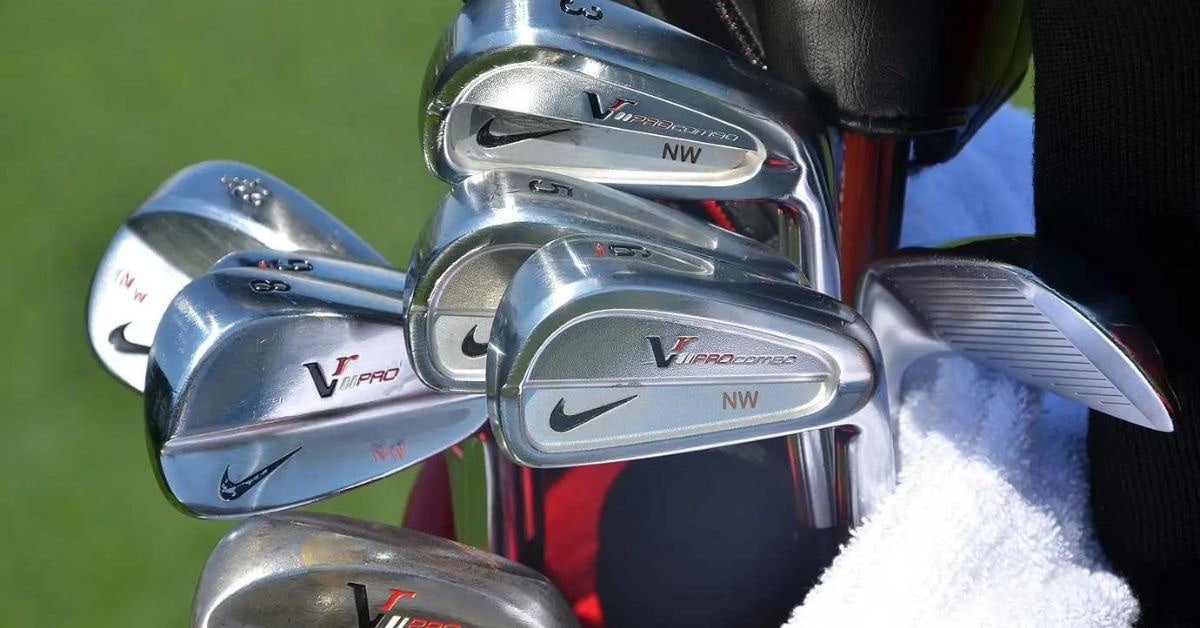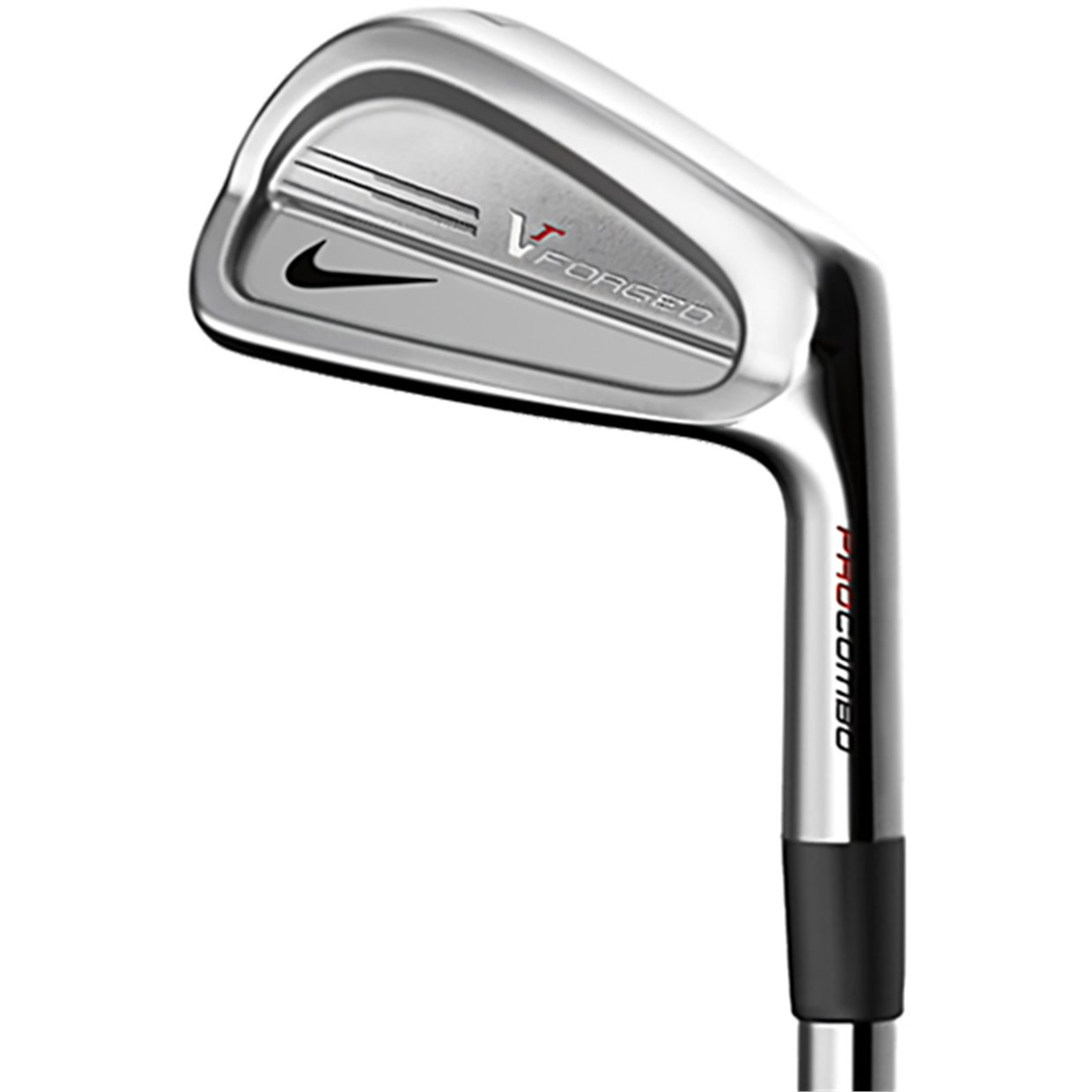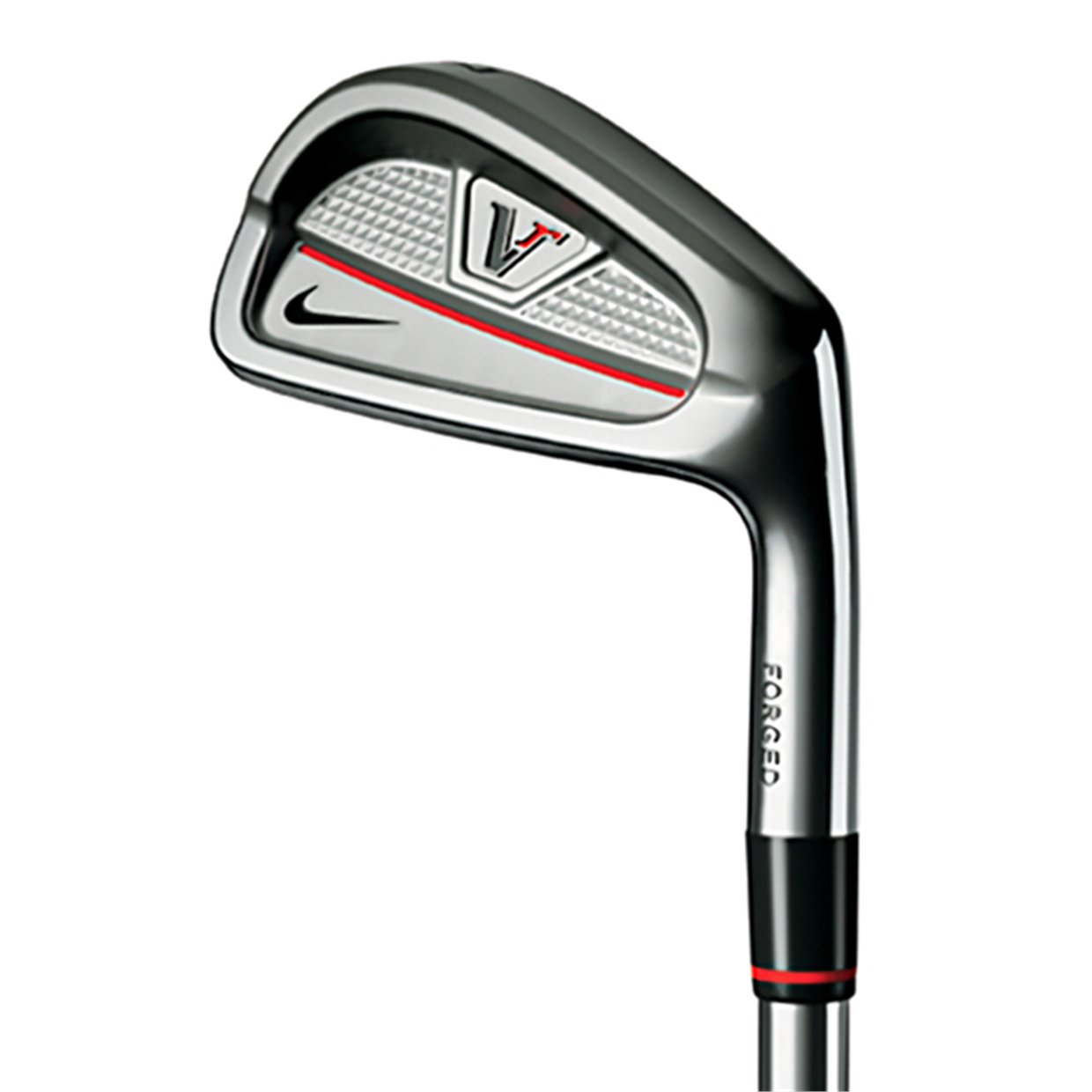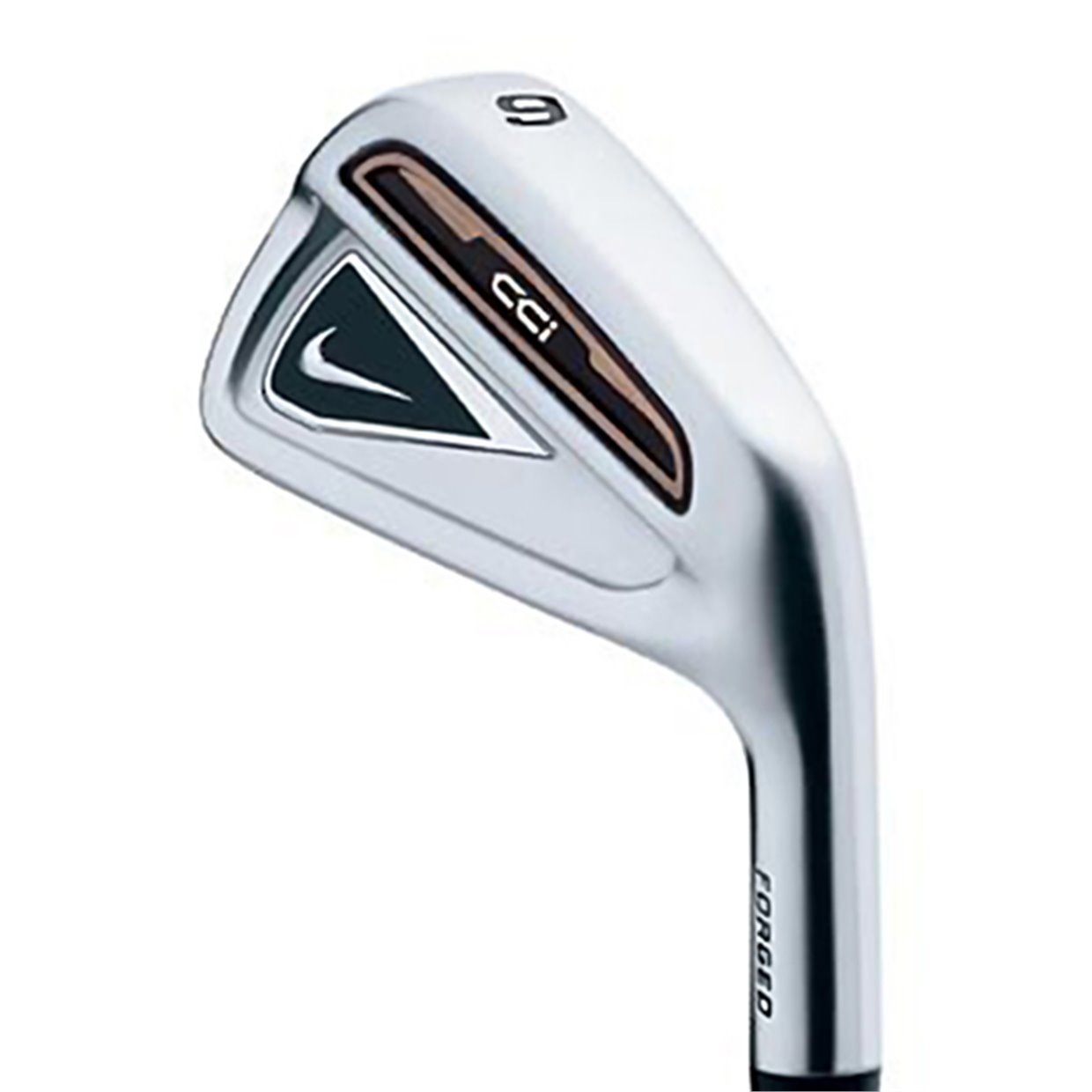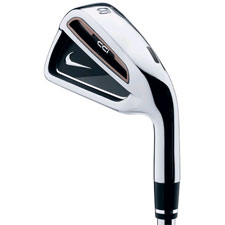Initially, Nike entered the golf market with a focus on golf shoes and apparel.
The brand signed Seve Ballesteros and Curtis Strange in 1985, before working with the legendary Tiger Woods in 1995 — producing the famous red Sunday polo in 1997.
Nike expanded into golf club manufacturing in 2002 and enjoyed almost 15 years at the top of the game alongside prestigious brands like TaylorMade, Callaway, and Ping.
Unexpectedly, Nike exited the golf club market in 2016 — the debate is ongoing as to why the company pulled the plug on what was a seemingly successful avenue.
In this article, you’ll find a comprehensive list of Nike irons by year.
No doubt, the brand produced some iconic clubs. So, let’s get into it!
Nike Irons By Year
Nike launched its first set of irons in 2002, titled the Nike Forged Blades. Since then, the brand produced numerous clubs for everyday golfers and tour pros alike — most notably Tiger Woods and Rory McIlroy. Surprisingly, Nike announced in 2016 that it was ending the production of its clubs.
Here is a list of all Nike irons by year:
Nike Irons: 2000-2004
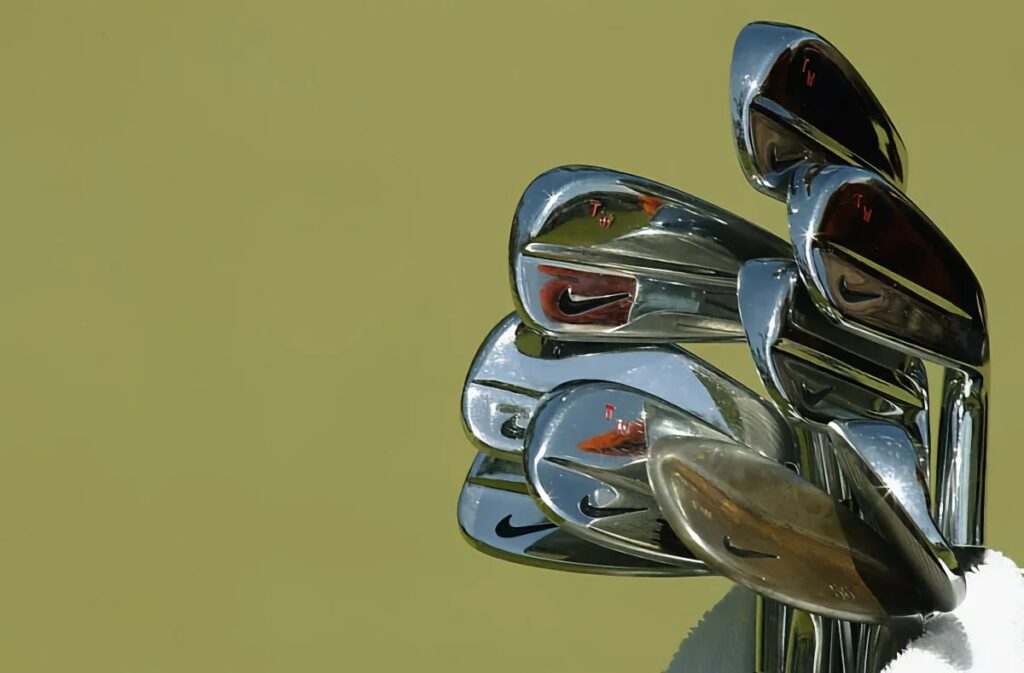
In 2002, Nike kickstarted their golf club venture with the Nike Forged Blades. These were released to demonstrate that the brand could produce a high-quality product, targeted at a smaller audience of highly skilled golfers.
In fact, David Duval was the first Tour player to win with Nike clubs. Before being made available to the public, the irons helped him to victory at the 2001 British Open.
Later in 2002, the brand launched its Pro Combo irons. Essentially, this set included a combination of forged blade short irons along with cavity-back long irons. This offered an extra level of forgiveness on off-center strikes for the higher handicapper.
Check out the video below, where The Vintage Golfer tests them out:
Shortly after, Nike introduced the CPR irons in 2003. Targeting the higher handicapper, the name stood for “Clubs for Prevention and Recovery,” and featured a set of easy-to-hit cavity-back irons along with scoop-back design woods to complete the set.
That same year, the Slingshot irons were launched. Also designed for forgiveness, these irons took on a funkier design language. Built with a wide sole and an innovative Powerbow “bridge” spanning the cavity, they certainly weren’t for the golf purist!
Nike Irons: 2005-2009
In 2006, Nike released the Slingshot OSS irons. In short, this was an oversized version of the original Slingshot irons released three years prior. With an extra-wide sole to improve turf interaction and forgiveness, it really helped with off-center strikes.
The following year, Nike launched the forgiving NDS irons (standing for Nike Distance Series). Receiving strong ratings for its simple and effective notch weight progression system, these irons were accurate and consistent.
Next, it introduced the CCI Cast and CCI Forged irons. Aimed at the better golfer, these irons combined classic styling with cutting-edge technology.
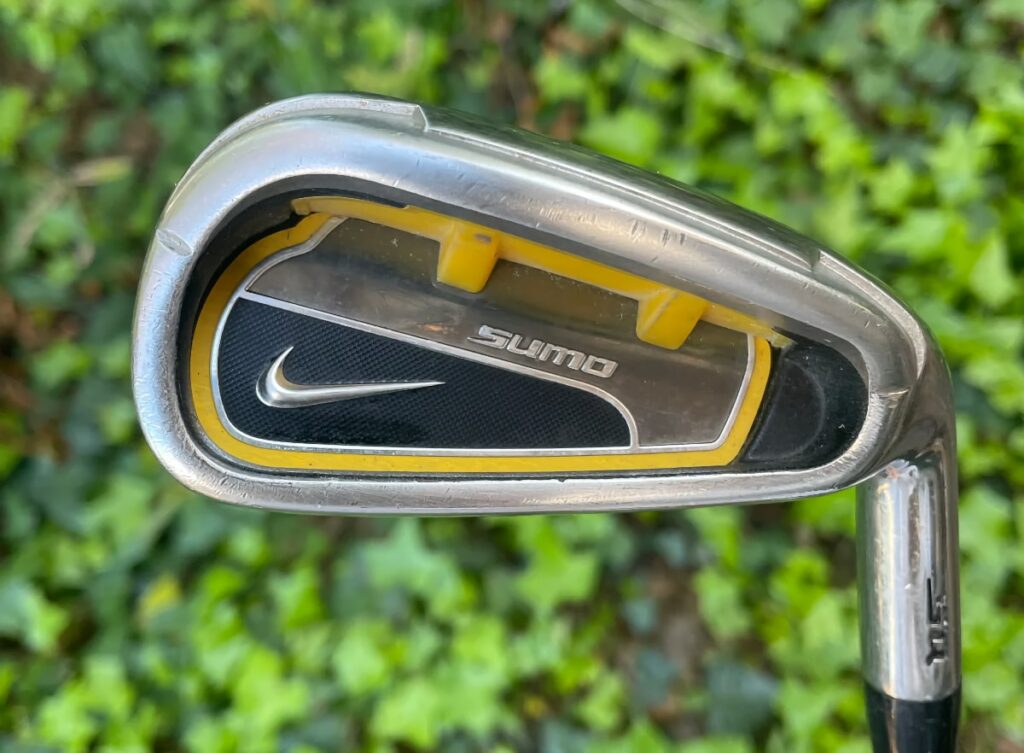
Rounding off a busy year, Nike developed the SQ Sumo irons. Produced with a grey and yellow color scheme, these irons featured a relatively clunky design that was intended to fit within the brand’s “square” collection of clubs — including the infamous square Nike driver.
The following year was equally stacked for Nike. In 2008, it revised its original irons for everyday golfers with the Pro Combo OS irons. Building on the original, it combined a muscle-back cavity in the short irons, and deep undercut cavities in the longer irons.
Also in 2008, the Slingshot HL and Slingshot 4D irons arrived. Drawing from the original Slingshot design language, these iterations positioned the Powerbow “bridge” lower and further back in the heads — adding forgiveness and improving feel.
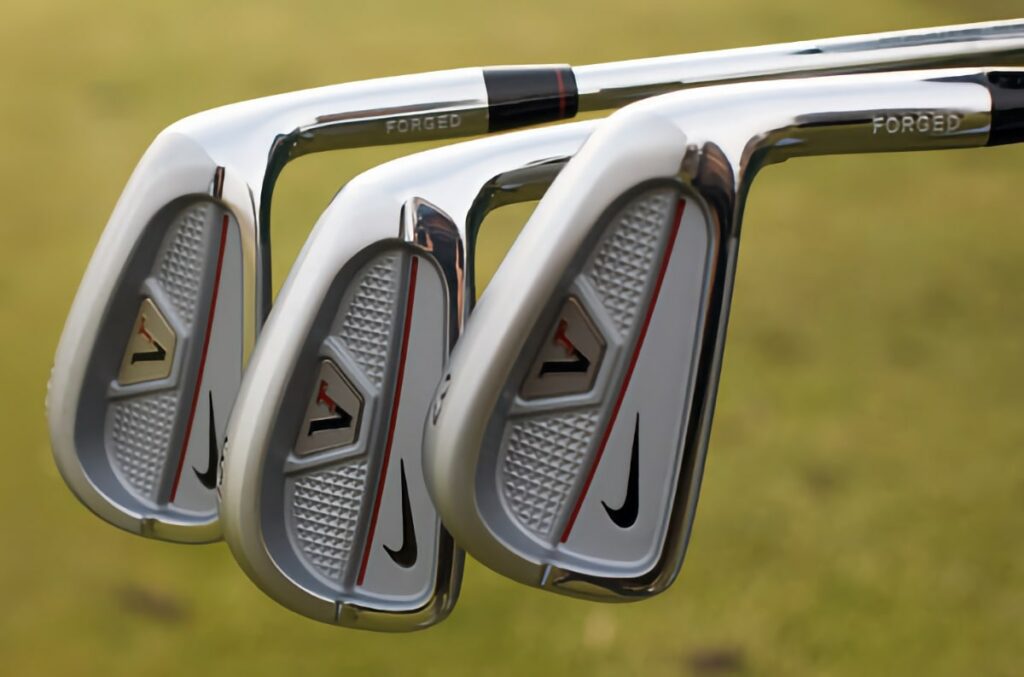
2008 also marked the introduction of Nike’s Victory Red series of irons — including the Victory Red Full Cavity, Victory Red Split Cavity, and Victory Red TW Blade.
Essentially, the full cavity suited higher handicappers, and the split cavity was intended for mid-handicappers. Finally, the Tiger Woods co-signed blades were aimed at better players, featuring a classic and compact head shape.
Nike Irons: 2010-2016
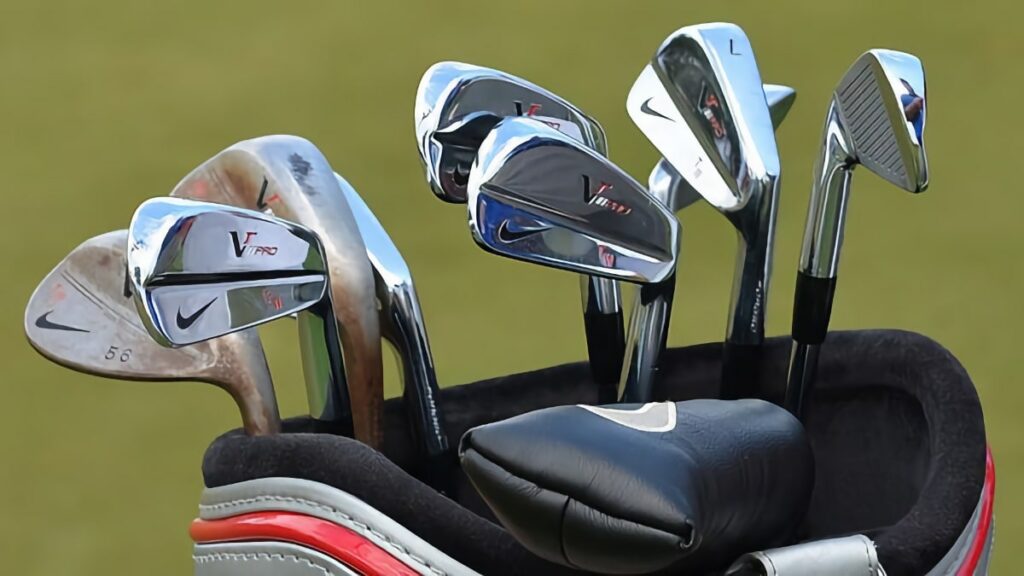
In 2010, Nike launched the VR Pro Combo irons. Featuring a shortened version of the “Victory Red” name, the set included bladed short irons and split-cavity long irons for added forgiveness. As a result, these irons are remembered as one of Nike’s best.
Alongside the VR Pro Combo irons, Nike released the latest VR Pro Blades. Intended for low handicappers, these irons were commonly seen in the bag of Tiger Woods.
Also, Nike introduced the quirky SQ MachSpeed irons in 2010. While the styling wasn’t for everyone, it was packed with useful technology that allowed the brand to market the clubs as the “fastest Nike irons ever.” Put simply, this meant greater distance.
Early in 2012, Nike debuted the VR-S and VR-S Forged irons. Continuing a long line of successful irons, they served the higher and low-handicapper golfers respectively.
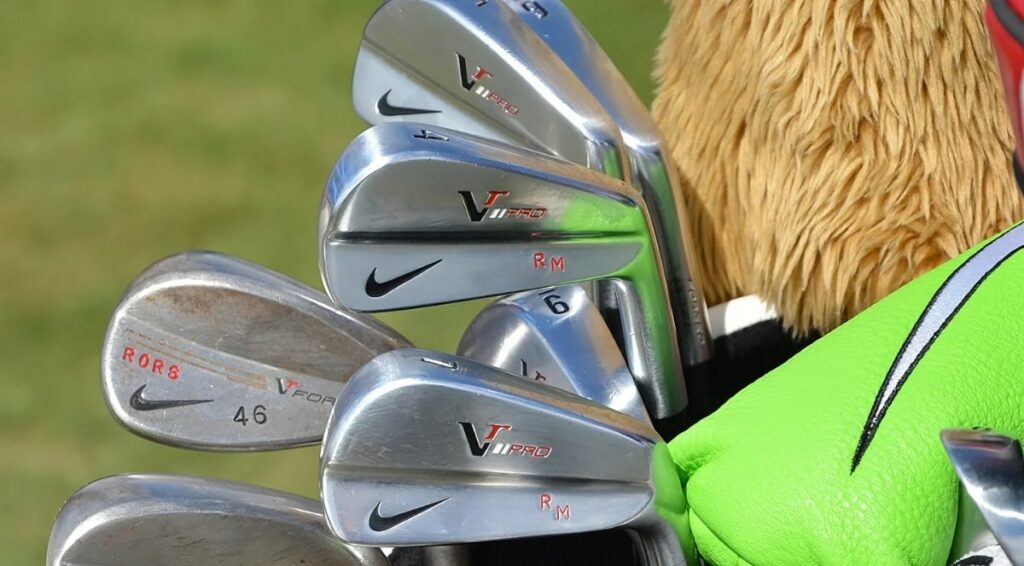
In 2013, Nike signed Rory McIlroy on a 10-year deal for $200 million. The following year, he used the VR Pro forged irons to claim victory at the 2014 Open Championship.
That same year, Nike introduced the VR-S Covert irons. Targeting the everyday golfer, these game-improvement irons featured perimeter weighting in a sleek head design.
In 2014, the brand launched its VR-S Covert 2.0 irons, along with a forged model and a VR-S Covert X version. With a significant design change from the previous iteration, the Covert 2.0 irons included an updated, larger cavity with an altered center of gravity.
Nike Vapor Fly Irons
In 2016, Nike released its final irons: the Vapor Fly and Vapor Fly Pro.
Essentially, the Vapor Fly irons were designed to be high-launching, with great stability at impact. With a hollow construction in the long irons and an RZN pocket in the short irons, the full set has a consistently explosive sound off the face.
The Pro version donned a black finish, with a compact head and very minimal offset to suit the better player. Ultimately, it’s a great blend of traditional and modern irons.
Check out the Nike Vapor Fly irons on Global Golf below:

